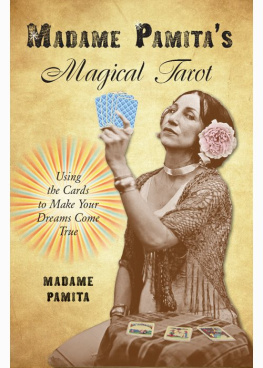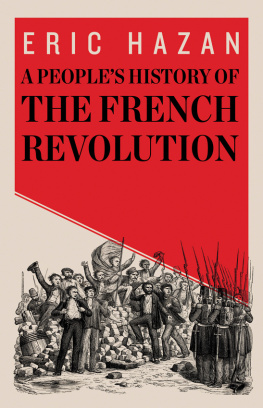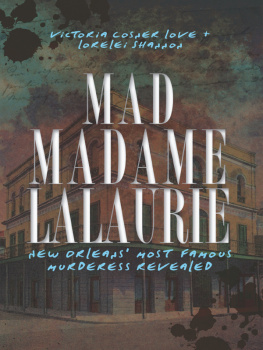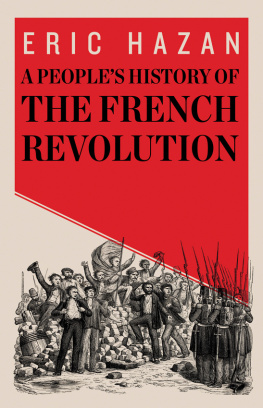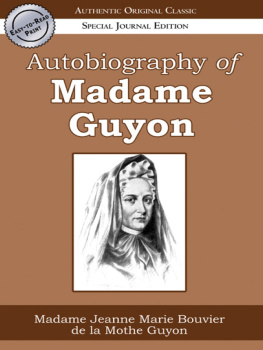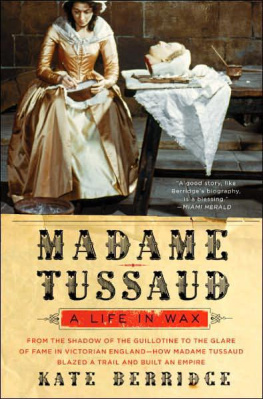FOR MY SON
who loves interesting facts
MADAME TUSSAUD: HER LIFE AND LEGACY
MADAME TUSSAUD: HER LIFE AND LEGACY
AN HISTORICAL ACCOUNT
GERI WALTON
First published in Great Britain in 2019 by
PEN AND SWORD HISTORY
an imprint of
Pen and Sword Books Ltd
Yorkshire Philadelphia
Copyright Geri Walton, 2019
ISBN 978 1 52673 408 2
eISBN 978 1 526 73 409 9
Mobi ISBN 978 1 526 73 410 5
The right of Geri Walton to be identified as the author of this work has been asserted by them in accordance with the Copyright, Designs and Patents Act 1988.
A CIP record for this book is available from the British Library All rights reserved. No part of this book may be reproduced or transmitted in any form or by any means, electronic or mechanical including photocopying, recording or by any information storage and retrieval system, without permission from the Publisher in writing.
Aura Technology and Software Services, India
Pen & Sword Books Ltd incorporates the imprints of Pen & Sword Archaeology, Atlas, Aviation, Battleground, Discovery, Family History, History, Maritime, Military, Naval, Politics, Railways, Select, Social History, Transport, True Crime, Claymore Press, Frontline Books, Leo Cooper, Praetorian Press, Remember When, Seaforth Publishing and Wharncliffe.
For a complete list of Pen & Sword titles please contact
PEN & SWORD BOOKS LIMITED
47 Church Street, Barnsley, South Yorkshire, S70 2AS, England
E-mail:
Website: www.pen-and-sword.co.uk
Or
PEN AND SWORD BOOKS
1950 Lawrence Rd, Havertown, PA 19083, USA
E-mail:
Website: www.penandswordbooks.com
Map of Important Sites
A. London . This is where Madame Tussaud first exhibited her wax figures after moving to England. She later established her museum on Baker Street, and then in the late 1800s, Madame Tussauds museum moved around the corner to its current location on Marylebone Street.
B. Bristol . This is the site of the Bristol Riots in 1831 that threatened Madame Tussaud and her wax figures.
C. Dublin . This is one of the regular cities that Madame Tussaud toured in the 1800s with her wax exhibit.
D. Edinburgh . This city was one of Madame Tussauds favorite cities to tour. This is also the city where two infamous murderers William Burke and William Hare committed a series of murders for profit.
E. Lancashire coast . Madame Tussaud appeared at a Mrs. Faringtons home along this stretch of coast after a shipwreck that caused her to lose part of her wax exhibit.
F. Paris . This was the location where many of the major events of the French Revolution occurred. It is also the site of the Bastille, the Temple, Dr Curtius Salon de Cire and Caverne des Grands Voleurs, the Palace of the Tuileries, the Louvre, the Fte de la Fdration and Maximilien Robespierres Festival of the Supreme Being.
G. Strasbourg . This is the birthplace of Madame Tussaud.
H. Bern . This is where Madame Tussaud spent the first few years of her life and the location where Dr Curtius began making his anatomical wax figures.
Preface
On December 1, 2017, a location of the world-famous Madame Tussauds wax museum opened in Delhi, India. With over 20 locations in major cities around the world, the Madame Tussauds brand is a household name synonymous with the concept of a wax museum. Moreover, the chain has more than doubled in size over the last ten years, and while revenues for the chain are not publicly available, the Tussaud Group was purchased in 2007 for $1.9 billion. This chain of museums has remained a vibrant, ongoing attraction for well over 200 years, all stemming from the remarkable efforts of one Anne Marie Tussaud ne Grosholtz, born into one of the most violent and turbulent times in human history.
This is her story.
PART I
Marie Grosholtz
Spring 1789
Versailles, France
Chapter 1
Boiling Point
I can boast that the first act of the Revolution began at my house.
Dr Phillipe Curtius
Traveling from Paris in the spring of 1789, 28-year old Marie Grosholtz witnessed one of the greatest splendours of her time. It was the Palace of Versailles. In front of her would have been a grand structure comprising a huge gold-trimmed building (the corps de logis ) that contained the royal apartments, flanked on three sides by colonnaded secondary buildings that thus enclosed the Cour Royale (Royal Court). The Palace of Versailles was then the centre of royal influence in France and the home of King Louis XVI and his Queen, Marie Antoinette. In those days, France was one of the most powerful nations in the world, and the Palace of Versailles proudly symbolized Frances status. Yet, this world was on the verge of cataclysmic change.
Marie was likely conscious of a looming social upheaval. Just that spring, outside the very gates of the Palace, the French populace had formed a National Assembly and soon after made an oath not to disband until they created a new constitution. There was great unrest over excessive taxation, lack of food, and the perceived ineptitude and moral turpitude of the royals. Moreover, despite Frances stature in the world, the French state faced crushing debt. The King had recently reinstated the popular Jacques Necker to stabilize finances, but tensions between the monarchy and the populace continued to heighten.
In those days, Maries business at the Palace of Versailles likely involved tutoring King Louis XVIs youngest sister, Madame lisabeth, in the art of making wax figurines. The making of wax creations had caught the eye of lisabeth several years earlier, just like it had caught the eye of others. Wax creations were extremely popular in Paris in the late 1700s, and representations of fruit and flowers were the frequent results.
lisabeth supposedly became so enamoured with the artistic potential of wax that she begged to learn wax modelling. To aid in her instructions in 1779, Maries mentor and uncle, Dr Philippe Math Curtius, appointed then 18-year-old Marie to teach her. According to Marie, she was so often at the Palace that lisabeth became attached to her and requested she live there. While it is unclear if Marie truly resided there, it is known that lisabeth created many wax figures, including Christ, the Virgin Mary, and other holy figures, which she gave to friends.
Most of what is known about Maries early life comes from her Memoirs , although several scholars have cast doubt on the validity of some of her stories. For example, Marie noted that she served lisabeth as more than just a tutor. Marie also recounted that the famed Enlightenment philosopher Jean-Jacques Rousseau found himself owing some critical debt, and to solve it, he appealed to lisabeth. It was rather suspect that the pious lisabeth, who confessed every Saturday and took the sacrament every Sunday, was willing to help Rousseau, whose theological ideas were at complete variance to her own. However, Marie was supposedly sent off to Paris with the sum adequate to relieve Rousseau from his difficulties.




